LEGO and National Geographic have announced they are partnering on a new line of LEGO City and Friends sets meant to inspire kids to be more environmentally conscious. The new sets (which have been available in most countries since June 1st–available in the Americas starting August 1st) feature ocean exploration and animal rescue themes. The sets include a menagerie of new LEGO animals including a hammerhead shark, anglerfish, manta ray, baby pandas, sloths, alpacas, and multiple elephants.
The sets feature the National Geographic Explorers logo, and LEGO announced it is also donating to the National Geographic Society to fund grants in ocean exploration and species conservation. As part of the campaign, LEGO has also launched an “Explore the World” website and video series to help kids develop creative ideas to address real-life environmental issues.
LEGO and National Geographic have previously collaborated on wildlife awareness sets like the Friends Sea Life Rescue and City Jungle sets. However, this is the first time the two brands are partnering on a campaign that seeks to inspire kids to think about creative ways to protect the planet.
The LEGO City sets are meant to help kids explore the oceans, showing behind the scenes looks at real-life divers in the instructions and in a new video series. The underwater sets feature a hammerhead shark, anglerfish, manta ray, and a shark that can swallow a minifigure, as well as a large boat that actually floats.
60266 Ocean Exploration Ship | 745 pieces
UK £124.99 | US $149.99 | CAN $179.99
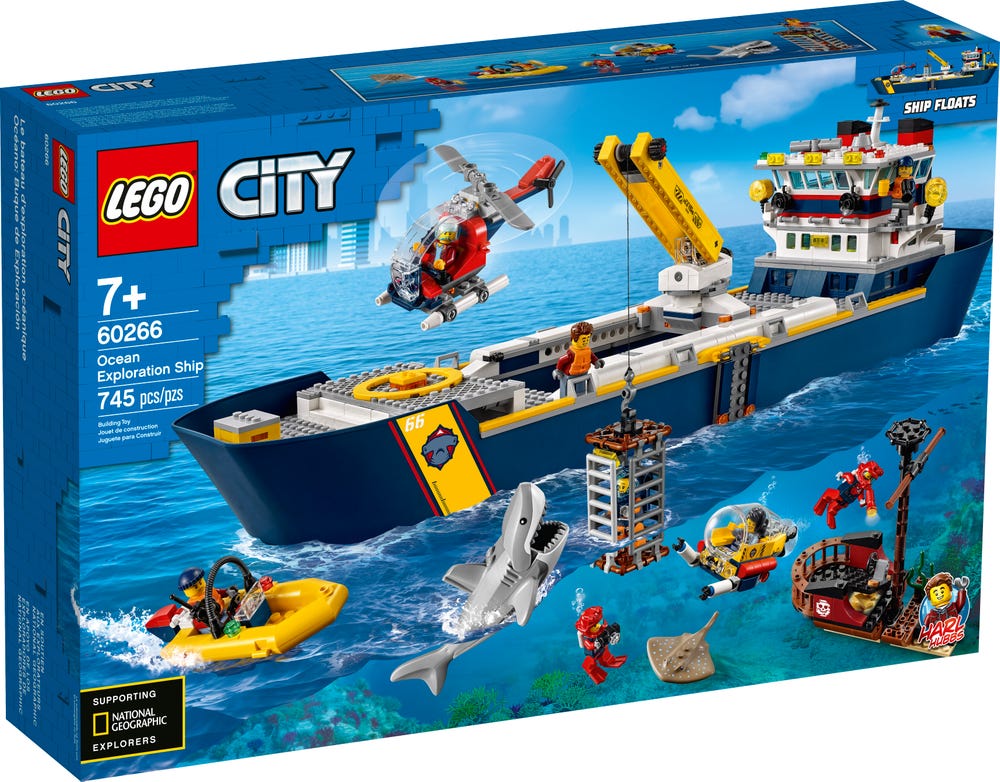
60265 Ocean Exploration Base | 497 pieces
UK £54.99 | US $79.99 | CAN $109.99
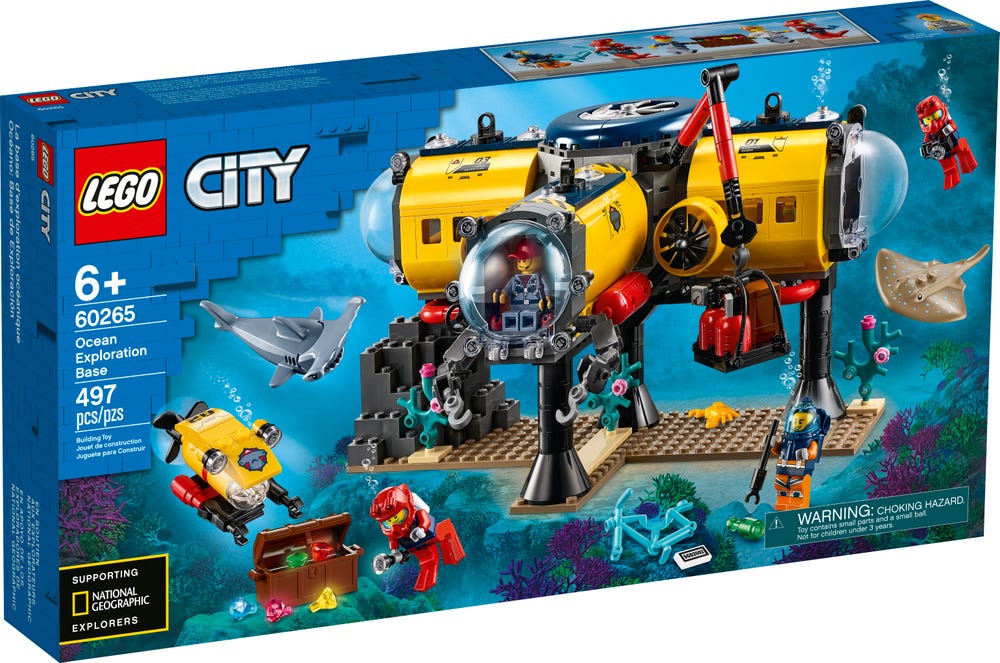
60264 Ocean Exploration Submarine | 286 pieces
UK £24.99 | US $39.99 | CAN $49.99
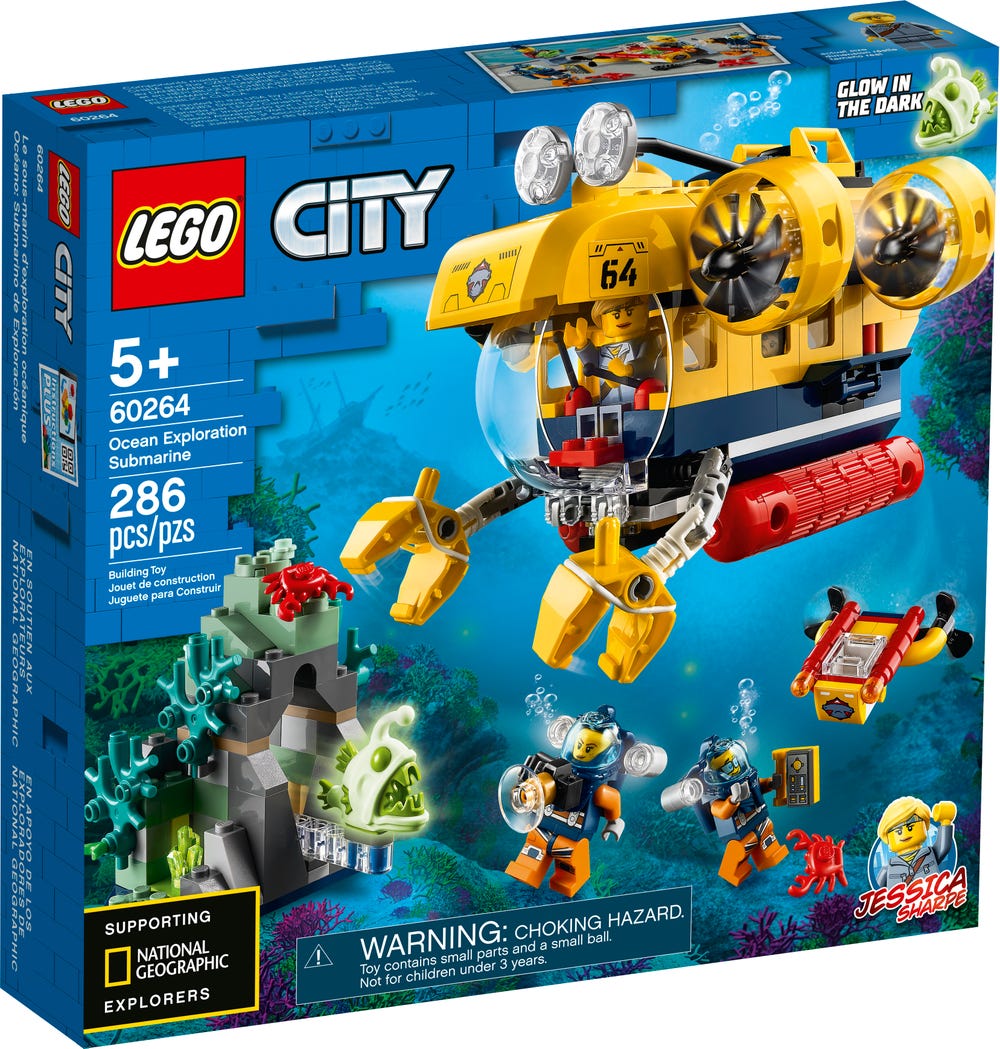
60263 Ocean Mini-Submarine | 41 pieces
UK £8.99 | US $9.99 | CAN $13.99
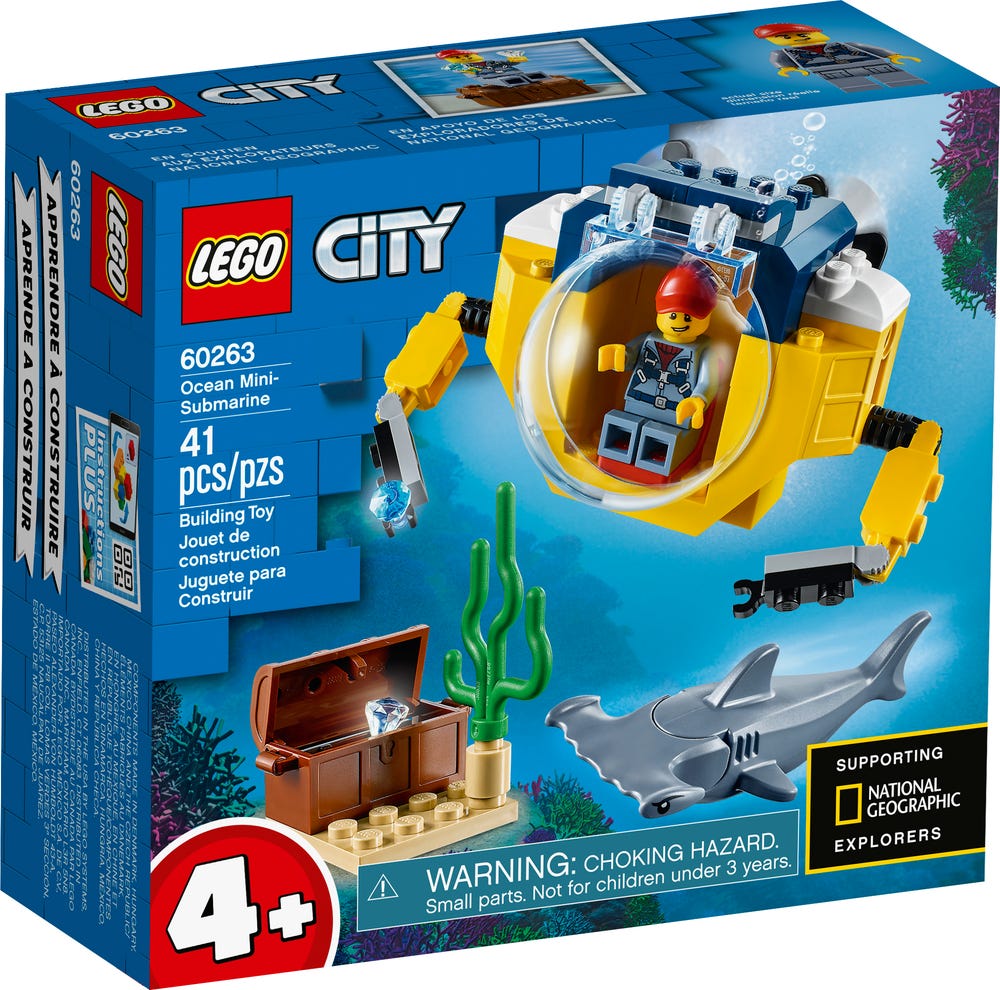
LEGO Friends focuses on the jungle with sets that feature rescuing baby elephants, pandas, sloths, llamas, and tigers. The sets also feature behind-the-scenes interviews with real-life people who rescue animals.
41424 Jungle Rescue Base | 648 pieces
UK £74.99 | US $79.99 | CAN $119.99
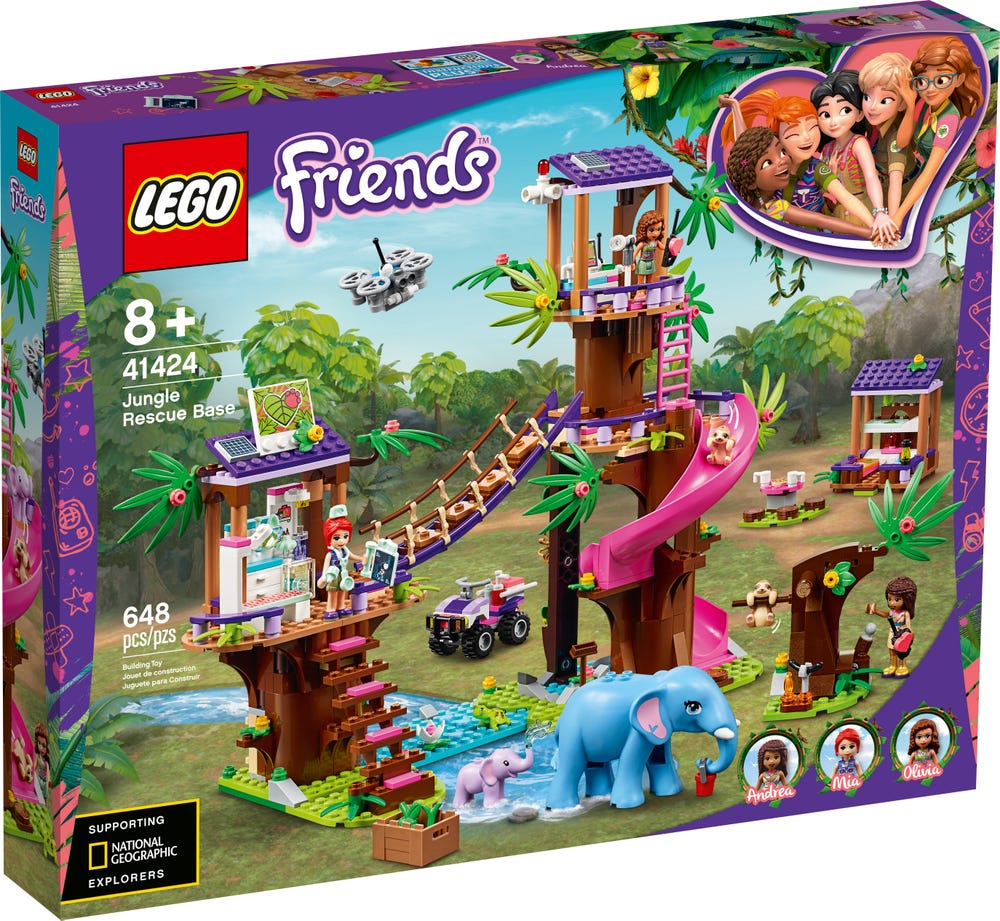
41432 Alpaca Mountain Jungle Rescue | 512 pieces
UK £54.99 | US $59.99 | CAN $79.99
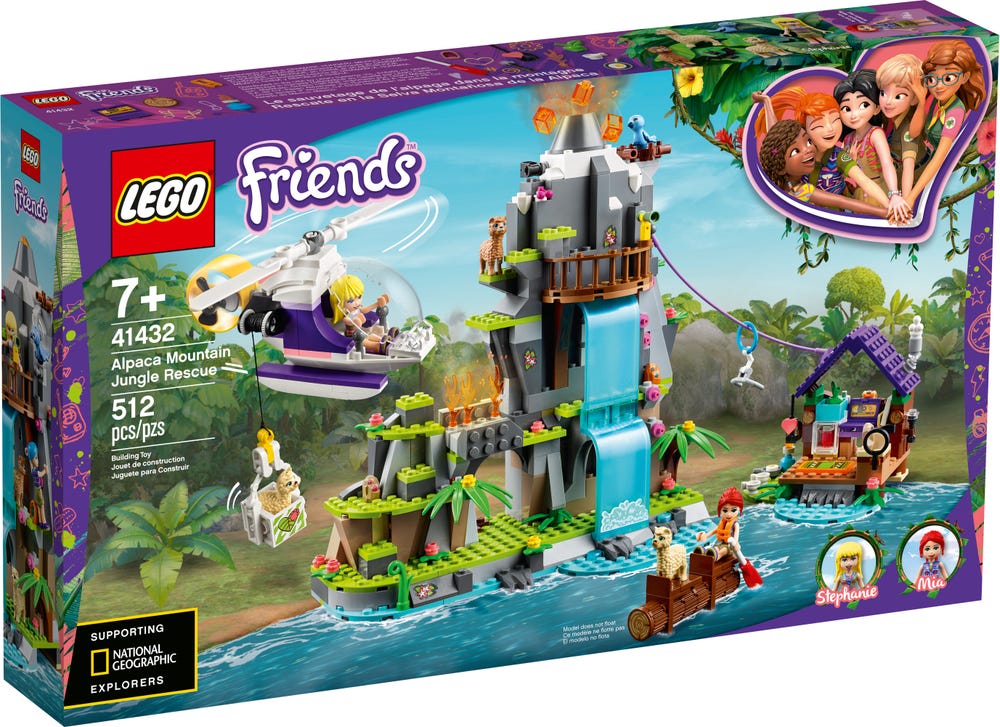
41423 Tiger Hot Air Balloon Jungle Rescue | 302 pieces
UK £34.99 | US $39.99 | CAN $49.99
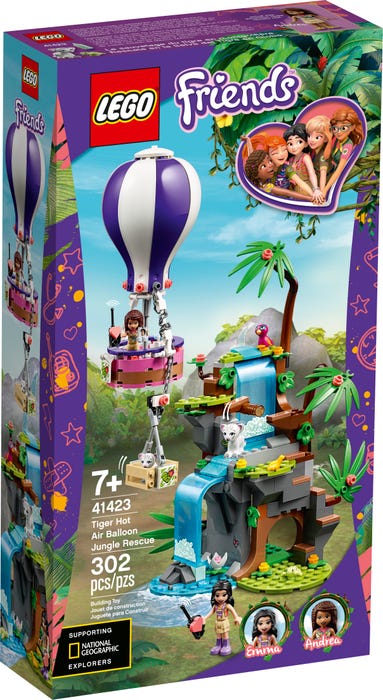
41422 Panda Jungle Tree House | 265 pieces
UK £24.99 | US $29.99 | CAN $39.99
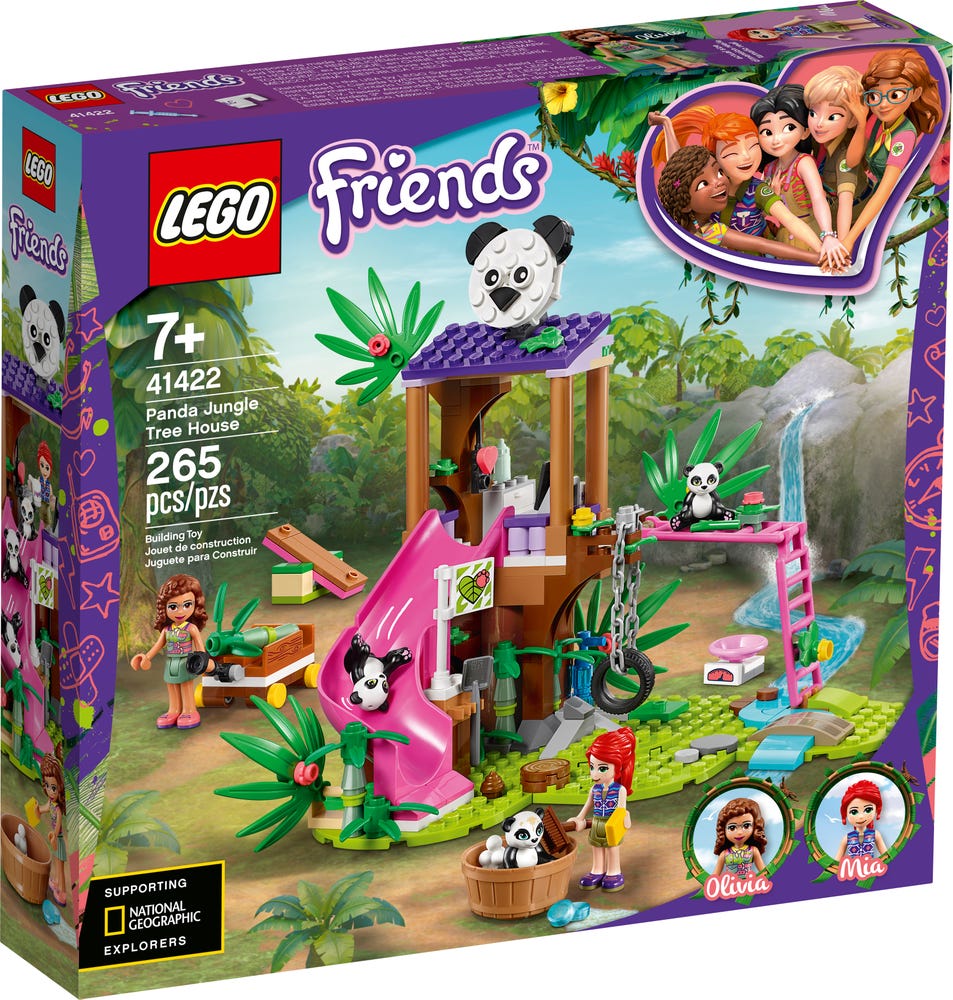
41421 Baby Elephant Jungle Rescue | 203 pieces
UK £17.99 | US $19.99 | CAN $24.99
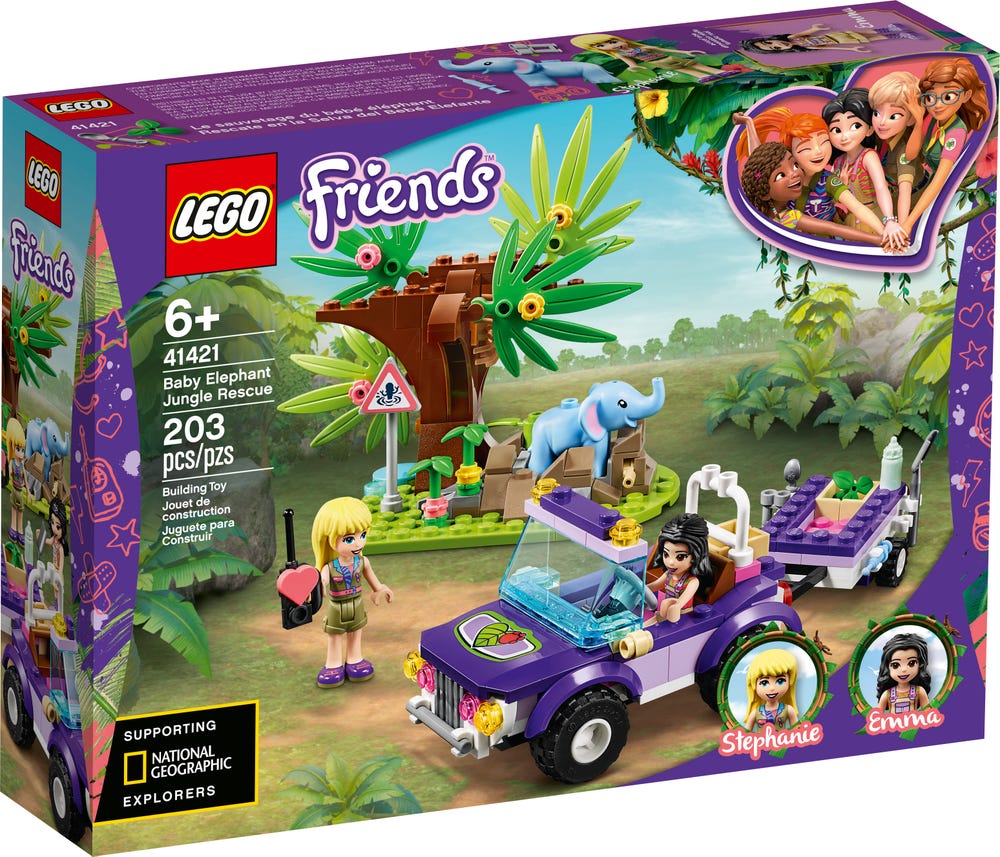
The full press release from LEGO is included below. What do you think about LEGO’s partnership with National Geographic? What other animals would you like to see LEGO create?
The LEGO Group and National Geographic inspire kids to develop creative solutions for real-life environmental challenges
New LEGO City and LEGO Friends products released as part of campaign to engage children in exploring their world and the problems its creatures are facing
Billund, Denmark, 25 June 2020: Today, the LEGO Group and National Geographic unveil their most recent partnership. New LEGO City and LEGO Friends sets have been developed to create awareness about exploration and the protection of endangered species in the world’s jungles and oceans. To support the launch and engage children even further, a campaign has been developed in collaboration with National Geographic to encourage children to explore the world and maybe even develop their own creative ideas on solving the real-life challenges our world is facing. The campaign site is now live in English. The LEGO Group is also announcing a contribution towards the National Geographic Society to fund grants in ocean exploration and species conservation.
 The campaign will invite kids and their parents to visit the heights and depths of the earth, and to learn about exploring our world and protecting wildlife in our oceans and jungles. This includes educational content about pandas, sharks, elephants, deep sea creatures and much more. To inspire kids to pursue creativity as a way to one day help protect the world’s wildlife, the campaign will portray stories from six different National Geographic Explorers who are working in creative, unexpected and surprising ways to help address real-life problems that our planet is facing. National Geographic Elephant Ecologist, Dominique Gonçalves, is one of the explorers sharing her personal story about how she needed a creative solution to stop elephants eating food from villages in Mozambique. Her story shows that even the simplest ideas can make a big difference. Knowing that elephants are scared of bees, she implemented a system of rope fences with beehives attached so the bees now safely guide the elephants away. By seeing these stories, kids and parents will see that many of the world’s challenges can be impacted by using creativity.
The campaign will invite kids and their parents to visit the heights and depths of the earth, and to learn about exploring our world and protecting wildlife in our oceans and jungles. This includes educational content about pandas, sharks, elephants, deep sea creatures and much more. To inspire kids to pursue creativity as a way to one day help protect the world’s wildlife, the campaign will portray stories from six different National Geographic Explorers who are working in creative, unexpected and surprising ways to help address real-life problems that our planet is facing. National Geographic Elephant Ecologist, Dominique Gonçalves, is one of the explorers sharing her personal story about how she needed a creative solution to stop elephants eating food from villages in Mozambique. Her story shows that even the simplest ideas can make a big difference. Knowing that elephants are scared of bees, she implemented a system of rope fences with beehives attached so the bees now safely guide the elephants away. By seeing these stories, kids and parents will see that many of the world’s challenges can be impacted by using creativity.
“We know that creativity is an incredible skill, and the 21st century needs all the creative problem-solving it can get.” Says Ellen Catherine Lucy Bowley, LEGO Friends Designer, the LEGO Group. “Caring for our planet is becoming ever more relevant to kids around the world. They are more committed to seeing positive environmental change than any previous generation, and their creativity will play a key role in finding solutions that will help better protect our wildlife. We hope this initiative will inform children of the current challenges explorers are facing and reassure them that even the most simple or unusual idea can make a big difference in the real world. The most important thing is to have a YES YOU CAN attitude. Therefore, this initiative is dedicated to kids with this exact attitude, children who are curious to learn and make a difference for our wildlife.”
Paul Rose, a National Geographic Ocean Explorer who began his journey as a creative child and today explores the ocean in unexpected ways, is also featured on the campaign site. He says “As a kid I loved swimming and building things – I lived for making soap-box carts and being in the sea! Even on the coldest, roughest days, I would spend hours in the water imagining myself as a diver exploring the ocean. Amazingly, that dream has come true and, as a National Geographic Ocean Explorer, I now lead marine science expeditions to help protect our threatened ocean. It’s so cool to be able to share my story with kids all over the world and who knows, by following their own dreams, a lot of them could end up stepping into my fins to help explore and protect our ocean one day!”
The LEGO Group and National Geographic have a well-established relationship, previously having collaborated on wildlife awareness sets such as LEGO Friends Sea Life Rescue and LEGO City Jungle sets. However, this is the first time the two brands are partnering on a campaign that seeks to inspire kids to think creatively – not only is it fun, but it may result in a creative solution that can one day help explore and protect our planet.

well, donating to those good causes is a really nice gesture from LEGO Company.
It is truth that we didin;t see eye to eye lately, but no one can dispute that The LEGO Company is doing some amazing socially responsible things lately – supporting black lives mater (as any human life should be sacred, so investing in preserving lives is most noble cause), investing amazingly much to fight pandemic and support kids during Covid19 outbrake, searching for better material for bricks, searching for ecologicly acceptible solutions for power for their factories, partnering with Fairy Bricks and supporting them (trough them, kids in hospitals), now this – damn. I am impressed.
Impressed and inspired
These are nice and all, but the price/piece is a bit high, even considering the larger/complex parts like boat hulls and elephants.
For example 60265 Ocean Exploration base. 497pcs/$80 USD is not good value to me.
I’d be more likely to purchase it at $50USD.
Or if they had made the cylindrical part of the structure using curved slopes instead of huge hull parts and it was 750pcs then $80 would make sense.
The new scuba helmets are great! Boy oh boy do I hate those old spacesuit one-piece designs, though, where the helmet makes every minifig look bald.